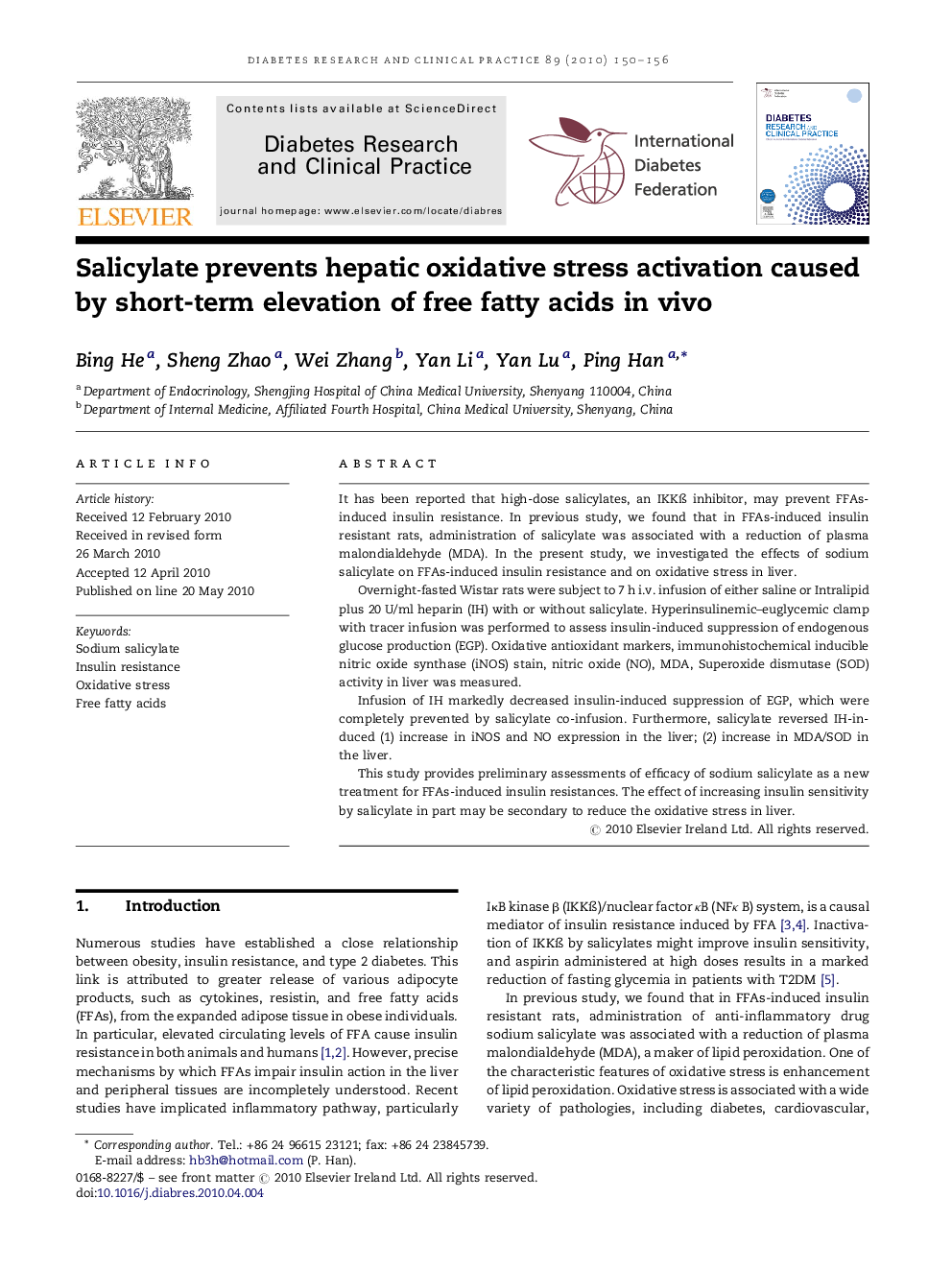| Article ID | Journal | Published Year | Pages | File Type |
|---|---|---|---|---|
| 2797506 | Diabetes Research and Clinical Practice | 2010 | 7 Pages |
It has been reported that high-dose salicylates, an IKKß inhibitor, may prevent FFAs-induced insulin resistance. In previous study, we found that in FFAs-induced insulin resistant rats, administration of salicylate was associated with a reduction of plasma malondialdehyde (MDA). In the present study, we investigated the effects of sodium salicylate on FFAs-induced insulin resistance and on oxidative stress in liver.Overnight-fasted Wistar rats were subject to 7 h i.v. infusion of either saline or Intralipid plus 20 U/ml heparin (IH) with or without salicylate. Hyperinsulinemic–euglycemic clamp with tracer infusion was performed to assess insulin-induced suppression of endogenous glucose production (EGP). Oxidative antioxidant markers, immunohistochemical inducible nitric oxide synthase (iNOS) stain, nitric oxide (NO), MDA, Superoxide dismutase (SOD) activity in liver was measured.Infusion of IH markedly decreased insulin-induced suppression of EGP, which were completely prevented by salicylate co-infusion. Furthermore, salicylate reversed IH-induced (1) increase in iNOS and NO expression in the liver; (2) increase in MDA/SOD in the liver.This study provides preliminary assessments of efficacy of sodium salicylate as a new treatment for FFAs-induced insulin resistances. The effect of increasing insulin sensitivity by salicylate in part may be secondary to reduce the oxidative stress in liver.
